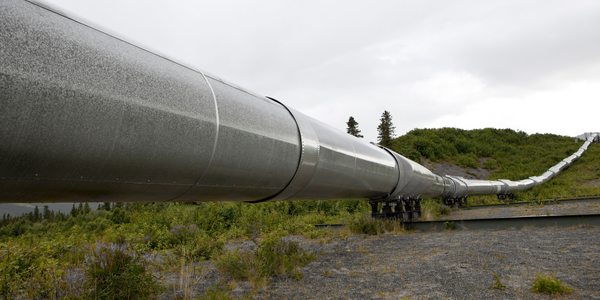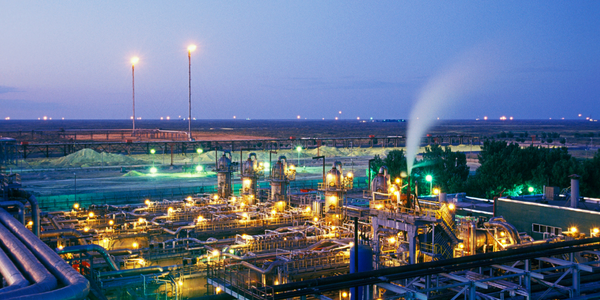Customer Company Size
Large Corporate
Region
- America
Country
- United States
Product
- Brocade MLX Series routers
Tech Stack
- MPLS/VPLS technology
- Ethernet
Implementation Scale
- Enterprise-wide Deployment
Impact Metrics
- Cost Savings
- Productivity Improvements
Technology Category
- Networks & Connectivity - Ethernet
Applicable Industries
- Telecommunications
- Oil & Gas
Applicable Functions
- Discrete Manufacturing
- Logistics & Transportation
Use Cases
- Process Control & Optimization
- Real-Time Location System (RTLS)
Services
- System Integration
- Cloud Planning, Design & Implementation Services
About The Customer
CyrusOne provides mission-critical, carrier-neutral data center facilities that protect and ensure the continued operation of customers’ information technology infrastructures. With state-of-the-art data centers built to be highly flexible, reliable, and available, CyrusOne serves a critical role in helping customers optimize their capital and operating costs associated with data center operations and management. CyrusOne customers include nine of the global Fortune 20 companies and more than 100 of the Fortune 1000. The CyrusOne National IX delivers a national Internet Exchange (IX) between data centers, ushering in a new threshold in high-performance data transfer and accessibility. The National IX enhances conventional data management by enabling a broad range of choice and reach for transporting large amounts of data over a nationwide ecosystem. The platform is engineered to provide a highly available network for massive real-time data transfer and active-active data centers in multiple locations.
The Challenge
CyrusOne, a provider of mission-critical, carrier-neutral data center facilities, aimed to enable its customers to exchange massive amounts of data at high speeds by extending their cloud connectivity ecosystem across its facilities nationwide. The company sought to deliver a cost-effective platform for transparent interconnections by deploying MPLS/VPLS technology. It also aimed to meet customer demand for high service levels and redundant interconnections with a highly resilient network architecture. Furthermore, CyrusOne wanted to improve business agility and service delivery times with rapid provisioning of new Ethernet ports. The company also aimed to provide investment protection and support for future bandwidth needs with high-density 10 Gigabit Ethernet (GbE) and 100 GbE scalability, supporting terabit LAG capacities.
The Solution
CyrusOne considered various platforms from multiple vendors—assessing their cost and features—before choosing Brocade to interconnect its cloud data centers. The company selected the Brocade MLX Series router because it provides the most value and future scalability. Working closely with Brocade, CyrusOne designed a network capable of supporting the National IX services at a scalable capacity based on customer needs. Today, CyrusOne has 22 Brocade® MLX® Series routers deployed nationwide, interconnecting its 12 data centers between the five metros that comprise the National IX platform. Over 2500 10 Gigabit Ethernet (GbE) and 1000 1 GbE ports are available across the network, with the capacity to expand to 100 GbE as customer demand for bandwidth grows. The network, capable of meeting or exceeding five-nines reliability, is designed with fully redundant elements at numerous levels.
Operational Impact
Quantitative Benefit

Case Study missing?
Start adding your own!
Register with your work email and create a new case study profile for your business.
Related Case Studies.

Case Study
Taking Oil and Gas Exploration to the Next Level
DownUnder GeoSolutions (DUG) wanted to increase computing performance by 5 to 10 times to improve seismic processing. The solution must build on current architecture software investments without sacrificing existing software and scale computing without scaling IT infrastructure costs.

Case Study
Remote Wellhead Monitoring
Each wellhead was equipped with various sensors and meters that needed to be monitored and controlled from a central HMI, often miles away from the assets in the field. Redundant solar and wind generators were installed at each wellhead to support the electrical needs of the pumpstations, temperature meters, cameras, and cellular modules. In addition to asset management and remote control capabilities, data logging for remote surveillance and alarm notifications was a key demand from the customer. Terra Ferma’s solution needed to be power efficient, reliable, and capable of supporting high-bandwidth data-feeds. They needed a multi-link cellular connection to a central server that sustained reliable and redundant monitoring and control of flow meters, temperature sensors, power supply, and event-logging; including video and image files. This open-standard network needed to interface with the existing SCADA and proprietary network management software.

Case Study
Refinery Saves Over $700,000 with Smart Wireless
One of the largest petroleum refineries in the world is equipped to refine various types of crude oil and manufacture various grades of fuel from motor gasoline to Aviation Turbine Fuel. Due to wear and tear, eight hydrogen valves in each refinery were leaking, and each cost $1800 per ton of hydrogen vented. The plant also had leakage on nearly 30 flare control hydrocarbon valves. The refinery wanted a continuous, online monitoring system that could catch leaks early, minimize hydrogen and hydrocarbon production losses, and improve safety for maintenance.










